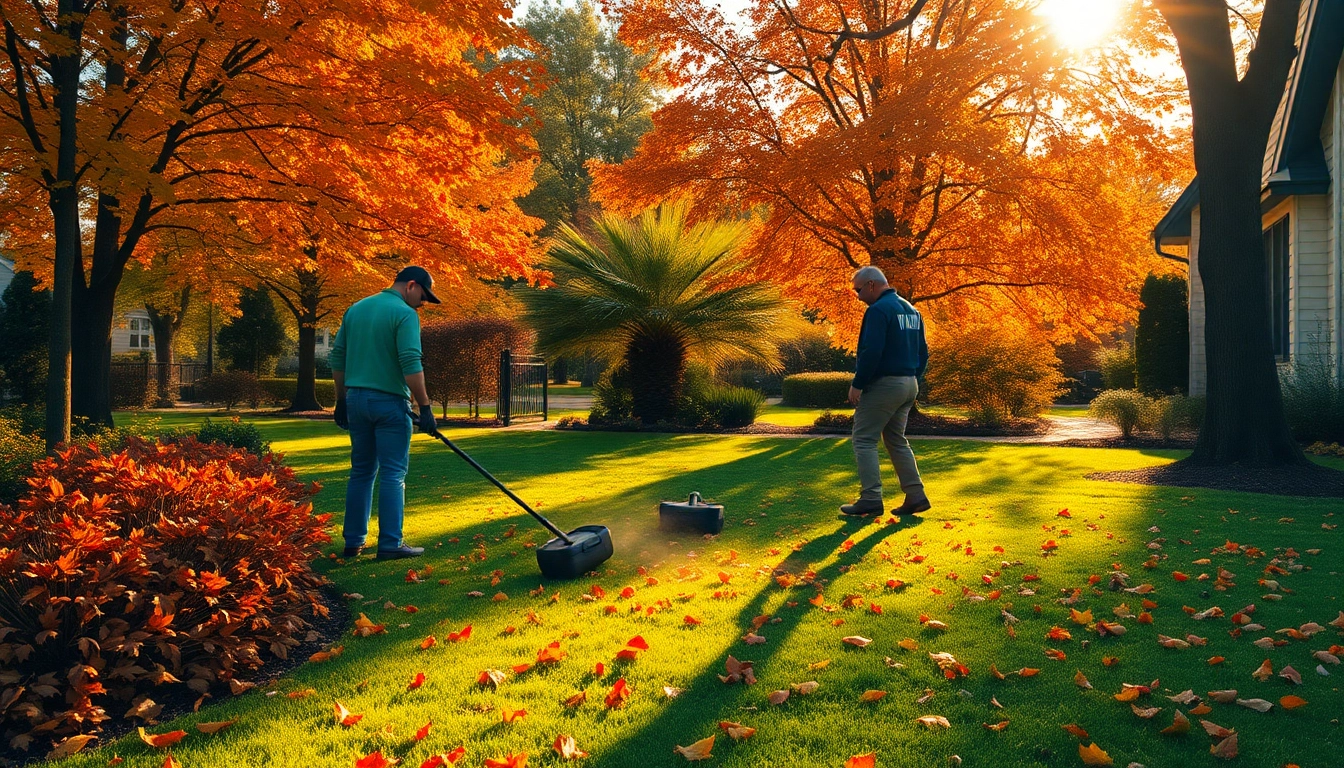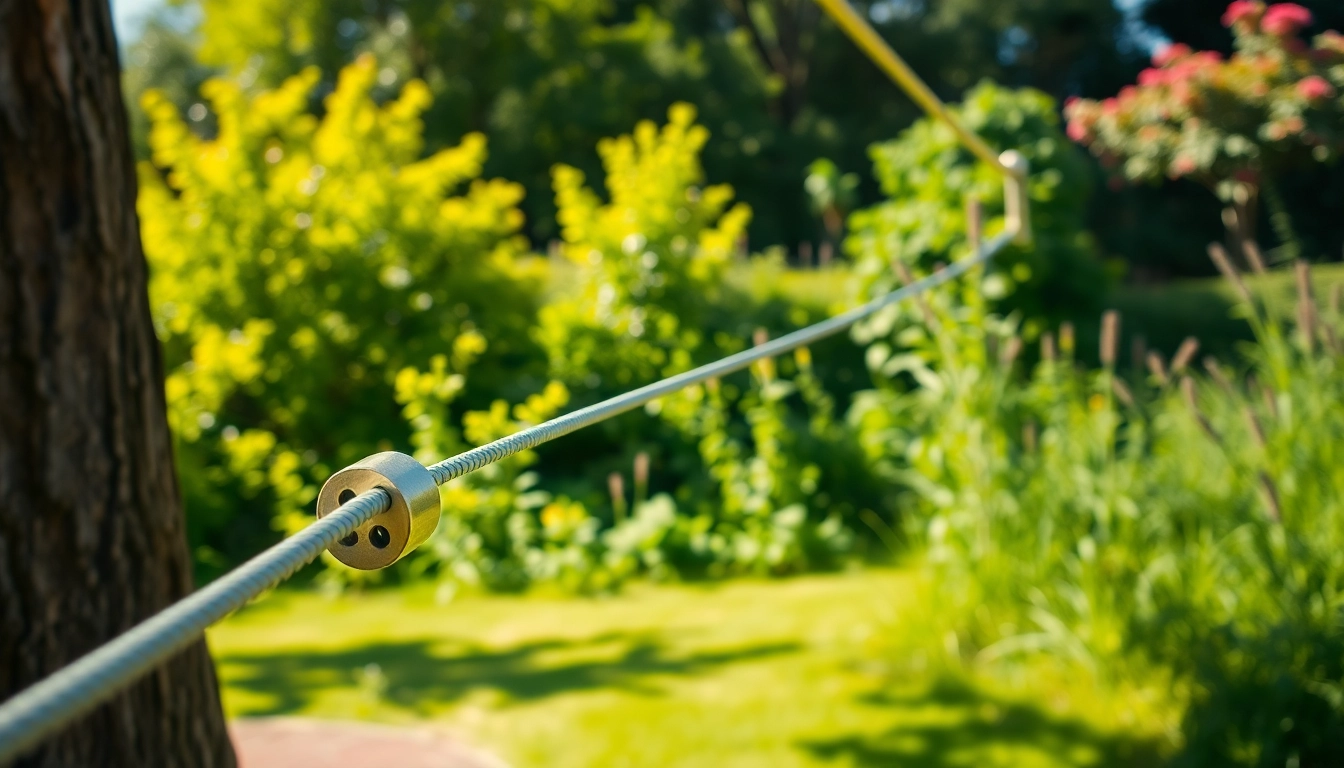Understanding Fall Clean Up and Its Importance
What is Fall Clean Up?
Fall clean up is a critical maintenance task in the transition from the vibrant growth of summer to the dormant state of winter. It involves cleaning up your lawn and garden by removing fallen leaves, debris, and unhealthy plant matter. This process not only prepares your landscape for the harsher winter conditions but also sets the groundwork for a healthy lawn come spring. Many homeowners may overlook this step, thinking it’s merely cosmetic, but it is foundational for lawn health and prevention of pests and diseases. Incorporating an effective fall clean up strategy can significantly enhance your yard’s resilience and aesthetics.
Benefits of Timely Fall Maintenance
Timely fall maintenance provides various benefits, which can be categorized into aesthetic, health, and environmental advantages. First and foremost, a well-maintained yard is visually appealing. It creates a positive impact on your home’s curb appeal. Additionally, thorough removal of leaves and debris minimizes the potential for mold and rot, which can lead to detrimental conditions for your grass and plants. It also reduces the habitat for pests and insects that may seek refuge in winter. Furthermore, environmental benefits include improved drainage and soil health, which are crucial for sustaining life in your garden.
How Fall Clean Up Affects Winter Lawn Health
Ensuring your lawn is properly cleaned up in the fall has direct implications on its winter health. When leaves and debris are left on the lawn, they can trap moisture and create a perfect environment for diseases such as snow mold. This fungal disease can result in patches of dead grass that may take a long time to recover in the spring. By conducting a thorough fall clean up, you are essentially giving your lawn a better chance to breathe and remain healthy throughout the winter. Not only does this preserve the grass, but it also fosters a more conducive growing environment when spring arrives.
Preparing for Your Fall Clean Up
Essential Tools for Effective Clean Up
Before embarking on your fall clean up, it is crucial to equip yourself with the right tools. Here’s a basic list of essential tools you’ll need:
- Rake: A sturdy rake is vital for gathering leaves effectively.
- Leaf Blower: This can significantly speed up the removal of leaves and debris.
- Tarps: Use tarps to gather and transport leaves easily.
- Trash Bags: For collecting smaller debris and plant matter.
- Pruning Shears: Necessary for trimming back perennials and shrubs.
- Gloves: To protect your hands while working with debris.
Having these tools at the ready will streamline your clean up process, making it more efficient and less labor-intensive.
Creating a Fall Clean Up Checklist
Organizing a structured checklist can be invaluable during fall clean up. Here’s an example of what such a checklist might look like:
- Clear leaves and other debris from the lawn.
- Remove dead plants and spent annuals.
- Trim perennials and cut back shrubs.
- Mulch flower beds and vegetable gardens.
- Inspect and clean garden tools.
- Prepare your lawn for winter fertilization if necessary.
By following this checklist, you ensure that no critical tasks are overlooked, which can lead to a healthier lawn in the spring.
Scheduling Your Clean Up Sessions
Timing is everything when it comes to fall clean up. Ideally, it should commence in early to mid-autumn, depending on your geographic location and weather conditions. Watching for the signs that leaves are falling and temperatures are dropping is essential. Additionally, dividing your clean up into several sessions can help manage the workload and tailor your tasks based on the weather. Regularly checking the progress of leaf fall can allow you to time your clean up effectively, preventing a last-minute rush before winter sets in.
Step-by-Step Guide to Fall Clean Up
Clearing Debris and Leaves
The first step in your fall clean up is to tackle the leaf piles and debris on your lawn. Use your rake or leaf blower to clear as much as possible. If you utilize a leaf blower, aim to direct leaves into manageable piles. Gather them onto your tarp or directly into trash bags for disposal. Be sure to check all areas of your yard, including corners and under bushes where leaves can accumulate.
Trimming Plants and Shrubs
Once the lawn is cleared, focus on your plants and shrubs. This includes cutting back any overgrown branches and removing dead or diseased plant matter. Aim to prune away about one-third of the plant’s height. This practice not only encourages healthy growth in the spring but also protects plants from harsh winter exposure. Take note of any plants that may require special care during the winter months in your climate, as this will dictate how much you should prune.
Preparing Flower Beds for Winter
Flower beds should be treated with care during your fall clean up. After clearing away debris, consider applying mulch to protect the soil. Mulching will insulate the roots of perennials and flower bulbs, helping to maintain an even soil temperature through winter. Additionally, take a moment to evaluate your garden’s layout and plan for any spring planting while it’s fresh in your mind. This helps streamline the preparation when warmer days return.
Hiring Professional Services for Fall Clean Up
When to Consider Hiring Professionals
While many homeowners choose to perform fall clean ups on their own, there comes a time when hiring a professional service is advisable. If your property has large mature trees that drop a significant amount of leaves, or if the scale of your landscaping is overwhelming, it may be time to consult with an expert. Similarly, if you’re physically unable to complete the work or if you simply don’t have the time, professional services can provide a valuable solution.
Evaluating Services and Costs
The costs associated with hiring a professional service can vary significantly based on the size of your property and the extent of work needed. Typically, prices can range from $200 to $600 depending on the services offered. When evaluating potential professionals, consider their reputability, past customer reviews, and what specific services are included in their pricing. Some companies may offer all-inclusive packages that include leaf removal, trimming, and even winter preparation tasks.
Questions to Ask Your Lawn Care Expert
Before selecting a lawn care company for your fall clean up, it’s crucial to engage with them. Here are some helpful questions to ask:
- What services are included in your fall clean up package?
- How long will the clean up process take?
- What equipment do you use for cleaning?
- Do you provide any guarantees on your work?
- Can you provide references from previous customers?
By asking these questions, you ensure you make an informed decision, selecting the service that best fits your needs.
Maintaining a Healthy Lawn Post Fall Clean Up
Winterizing Your Lawn Care Routine
After the fall clean up is complete, winterizing your lawn care routine is essential. Winterizing involves applying a winter fertilizer to help stimulate root growth even in the dormant winter season. The right balance of nitrogen, potassium, and phosphorus can ensure that your lawn is healthy and prepared for warmer seasons.
Understanding Soil and Fertilization Needs
Understanding the needs of your soil is critical to maintaining its health during winter. Consider testing your soil’s pH and nutrient levels, which can guide your fertilization process. This test will allow you to amend your soil according to its specific needs, helping to pave the way for a lush, green lawn in the spring.
Future Planning for Spring Lawn Care
The conclusion of fall clean up is actually the perfect time to start planning for spring lawn care. Taking notes on what worked well and what might need adjusting will be beneficial come planting season. Think about any new plants you’d like to introduce, changes in yard layout, and types of grass best suited for your region. This forward-thinking approach guarantees that your yard will thrive in the coming year.


